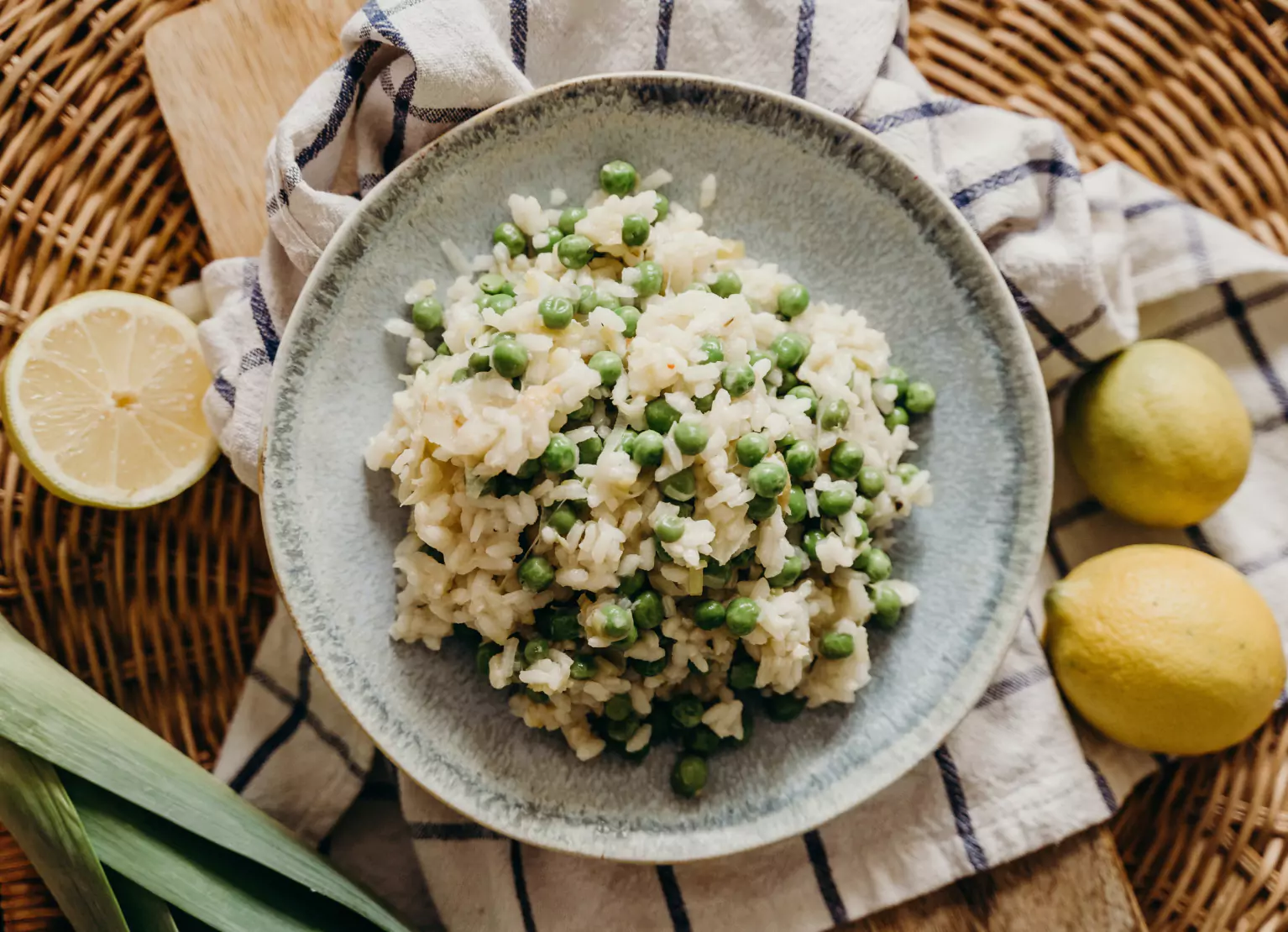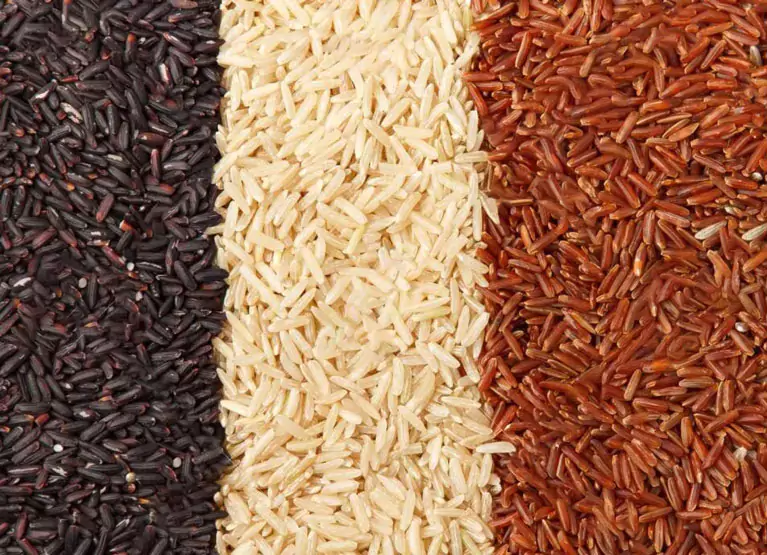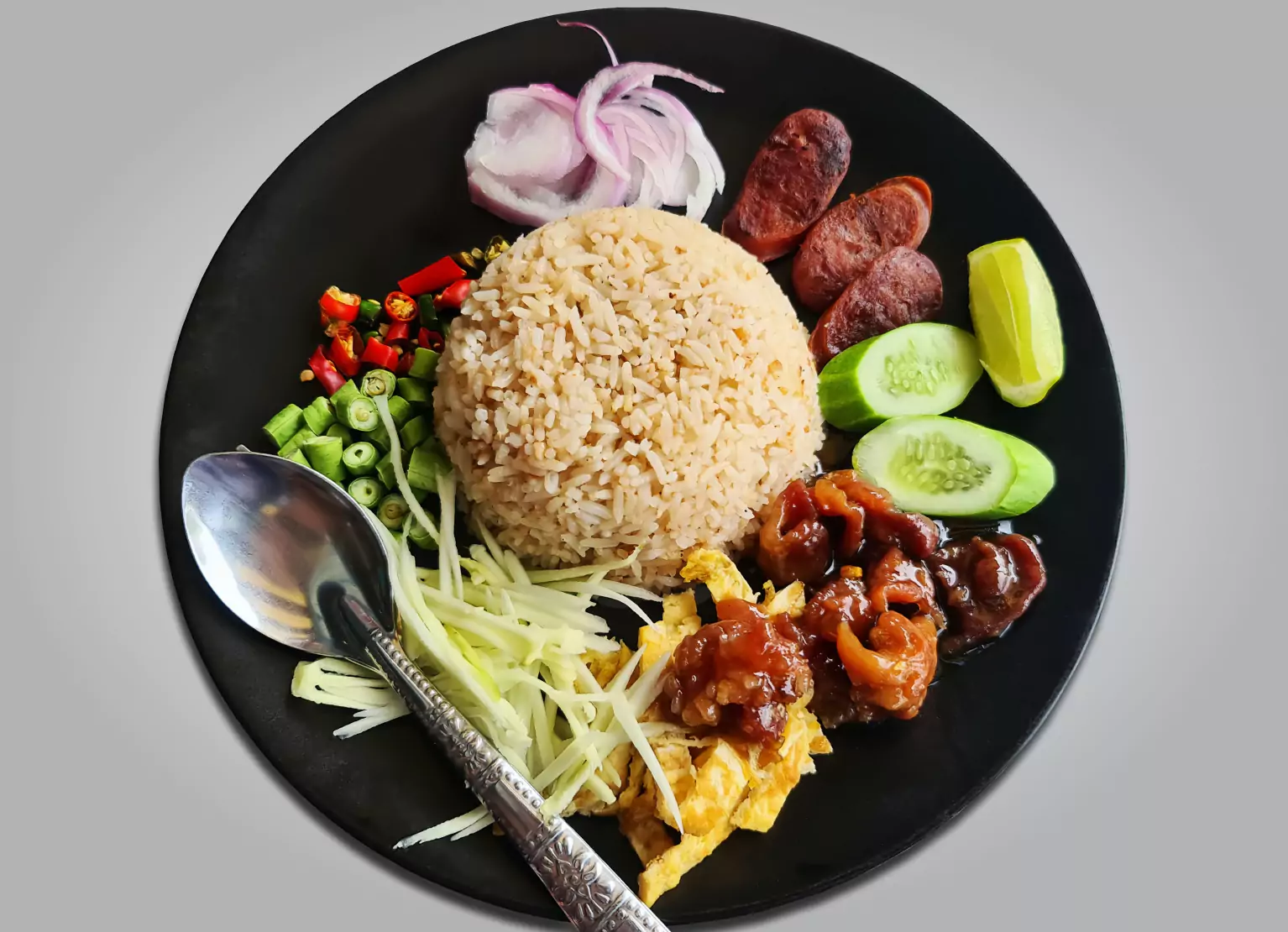Glycemic Index of Rice: Analyzing the Effect of Rice on Blood Sugar

Key Takeways
The world loves rice. It’s a staple food in many cultures and can have various health benefits for some. With 756 million tonnes of it produced across the globe and over half of the world’s population living on it as a staple food, it’s no wonder it’s so popular.
However, some people worry that eating rice will cause their blood sugar levels to spike. How does rice affect blood sugar levels? The answer depends on a few factors, including the type of rice and how you cook it.
For example, eating several cups of white rice on its own can spike your blood sugar because it can be low in fiber, high in carbohydrates, and has minimal protein or other additions to slow the sugar down from hitting your blood.
But having a small serving of brown rice (or any other whole-grain variety) with a protein source like meat, cheese, or tofu can leave you feeling satisfied, boost your vitamin and nutrient intake, and give you a healthy dose of fiber, too.
Read on to learn more about the types of rice that are best for your health, how it relates to the glycemic index, and what it all means for your blood glucose levels.
How Rice Structure Affects Your Blood Sugar Levels

We already know that blood sugar or glucose is a type of sugar in your blood. Your body gets this glucose from your food and uses it for energy. Your body typically breaks down carbohydrates into glucose—this process happens very quickly, usually within an hour after a meal.
Once glucose enters your blood, it triggers the pancreas to produce insulin. Insulin is a hormone that helps move glucose from the bloodstream into the cells. Too much glucose in your blood can damage nerves and blood vessels.
People with diabetes have higher than normal blood sugar levels because their bodies can't make or use insulin properly. But how does any of this have to do with rice?
Rice and Gut Health
The way rice is digested and broken down in your system depends mainly on the structure of rice and how it’s processed. All rice has a tough outer hull that is typically indigestible to humans and removed during processing. After this point, rice is composed of three main parts: the endosperm, germ, and bran.
- The bran and germ are high in many vitamins, minerals, and other nutrients.
- The endosperm is the white rice left behind when the bran and germ are removed after additional processing.
Rice is considered a whole grain when it still has the bran and germ in addition to the endosperm. Rice that has had the endosperm removed is known as white rice. Some white rice has additional nutrients like iron, and folic acid added back in after processing—it's commonly known as enriched rice.
To limit how much rice impacts your blood sugar after a meal, consider choosing more whole grain options versus white or even enriched rice.

A cup of white rice has 45 grams of carbohydrates, about the same amount of carbohydrates as a can of soda at 38 grams—this can be bad for your blood sugar levels. The problem with white rice is that it's been stripped of its bran and germ, leaving only the starchy endosperm. It makes it a high-glycemic food, meaning it causes your blood sugar to spike quickly. And when blood sugar spikes, insulin levels also rise.
Over time, high insulin levels can increase your risk of type 2 diabetes. In addition to its effect on blood sugar levels, white rice can also cause constipation compared to brown rice. It contains very little fiber, which is essential for a healthy digestive system for most people.
If you're looking to maintain steady blood sugar levels and avoid constipation, brown rice is better. It contains all three parts of the grain (bran, germ, and endosperm), so it has more fiber and nutrients than white rice. Brown rice also has a lower glycemic index, meaning it typically won't cause your blood sugar to spike as quickly.
Glycemic Index of Rice
The glycemic index is a system of ranking foods based on their effects on blood sugar levels. Ffoods with a high glycemic index raise blood sugar levels quickly, while those with a low glycemic index typically have a slower, more gradual effect.
There are a few different things to consider when looking at the glycemic index of a food. First, the type of carbohydrate in the food will affect its ranking. Your body absorbs refined carbohydrates (things like cereal, desserts, and pasta) more rapidly, so these will have a higher glycemic index.
Whole food carbs (whole grains, fruits, veggies) take longer to digest, so these have a lower glycemic index. In addition, processing methods can also affect how food ranks on this scale. For instance, whole wheat flour has a lower glycemic index than refined white flour because the processing removes some of the fiber that slows down digestion.

Foods are given a score from zero to 100, with 100 being the highest. Foods that rank high on the glycemic index scale can cause a rapid spike in blood sugar levels. Many of these foods are also high in sugars and have nutritional value.
In contrast, foods that rank low on the glycemic index are slowly digested and cause a gradual rise in blood sugar levels. Many of these foods tend to be high in fiber and other nutrients and may help to regulate appetite and reduce cravings. So, it’s no surprise the glycemic index can be a helpful tool for people with diabetes or other conditions that require careful blood sugar level management.
Remember, when it comes to the glycemic index…
It’s not the perfect measure when you’re picking foods. Like all dietary information, it’s important to remember that the glycemic index alone can’t tell you if a food is healthy or not. For example, some less healthy foods like chocolate cake may have a lower glycemic index than some more nutrient-dense items like watermelon and other fruits.
Can Rice Help With Weight Loss?
Like many other foods, rice doesn't have any magical properties that directly promote weight loss, but it still can be a beneficial addition to some healthy diets. Two important factors to consider when incorporating rice for weight loss purposes are the type of rice you choose and portion control.
Rice provides a significant source of carbohydrates which are essential for energy. For many, including carbs in a balanced diet may be important to meet nutritional needs and make their diet more sustainable over time to avoid unsustainable weight loss. One reason someone might limit rice intake may be if they are following a low-carbohydrate diet such as the keto diet.
Best Rice for Weight Loss
When choosing the best rice to eat for weight loss, brown rice tends to be more nutritionally beneficial than white rice due to it undergoing minimal processing and retaining its outer bran layers. This makes it a whole grain that is rich in fiber, vitamins, and minerals that are essential to maintaining optimal health and well-being.
The soluble fiber content in brown rice also helps to slow down digestion and promote the feeling of satiety which helps you feel fuller for longer periods of time, ultimately reducing the likelihood of overeating.
Incorporating moderate portions of whole-grain rice options, like brown rice, into a balanced diet may support weight loss by keeping you fuller and providing essential nutrients. However, it's crucial to consider your entire diet, portion sizes, and individual health needs when approaching any type of weight management strategy or diet.
Choosing the Healthiest Rice
As anyone who has ever cooked rice knows, there are many different types to choose from, and it often depends on what you’re cooking! Do you need rice for biryani or other Asian meals like stir-fries or curries? Try long-grain rice with a light, fluffy texture like basmati rice.
Are you looking for a type of rice for Spanish or other European dishes like paella and risotto? Pick short-grain rice with its sticky texture that helps to bind ingredients together. And if you’re looking for the perfect in-between, pick medium-grain rice—a versatile option for many different recipes.
While all rice is a good source of complex carbohydrates, some types are better for your health than others. For example, brown rice is a whole grain that contains all the grain's nutrients, including better fiber content.
On the other hand, white rice has had the bran and germ removed, leaving only the starchy endosperm. This means that white rice is less nutritious than brown rice and is more likely to cause spikes in blood sugar levels.
If you're looking for a healthier option, opt for brown rice or one of the many varieties of wild rice. These types of rice are more nutritious and have a lower risk of causing blood sugar spikes.
Three of the Healthiest Rice Varieties

Wondering what type of rice you should pick for better health? While there’s no reason to avoid other types of rice altogether, and there's no one-size-fits-all, here’s more information on three of the healthiest types of rice to choose from.
1) Brown Rice
Brown rice has a glycemic index of 66, making it a “medium” glycemic index food. With 112 calories and 24 grams of carbohydrates per 100 grams, a cup of brown rice is a reasonably healthy choice.
After processing, this rice also contains magnesium, vitamin B1, fiber, and other healthy components that may be missing (or in much lower quantities) in white rice.
2) Wild Rice
Wild rice has a glycemic index of 57, also landing it in the medium glycemic index category. For a starchy, typically high-carbohydrate food, this is a good sign. This variety of rice has 101 calories and 21 grams of carbohydrates per 100 grams.
This form of rice has phosphorus, magnesium, zinc, and fiber, which makes it an excellent nutritional choice.
3) Forbidden Black Rice
Forbidden rice has a glycemic index of 64, and it also contains a high dose of fiber. With a chewy, nutty flavor, black rice has essential vitamins like zinc and riboflavin, making it another healthy rice source.
Black or forbidden rice has 130 calories and 28 grams of carbohydrates per 100 grams, putting it on par with wild rice for nutritional content.
What to Know About White Rice
Be cautious with rice varieties like white rice, basmati rice, or jasmine rice. All of these are processed varieties of rice and have lost their hull. So it can be lower in fiber than unprocessed rice and higher in carbohydrates and calories that can spike your blood glucose levels. One thing to remember, though, is that although less common, basmati and jasmine do have brown rice varieties as well.
For example, steamed white rice has a glycemic index of 70, and you’re looking at a whopping 130 calories, 28 grams of carbohydrates, and no fiber or nutritional value to slow down or supplement the sugar entering your blood. This type of rice is most likely to spike your blood glucose and needs something to go with it to include it as part of a healthy diet.
Some Ways to Potentially Reduce the Glycemic Index
If you’re going to eat varieties of rice that are higher in glycemic index and may spike blood glucose levels, you may want to consider a few of these tips and tricks. They may help reduce the impact the carbs have on your blood glucose levels. For example:
- Eat your rice with grilled chicken. The added protein will lower the overall glycemic index of the meal.
- Have some tofu with your rice, and add soy sauce or your choice of flavoring for a tasty dish that won’t make your blood sugar hit the ceiling after you eat.
- Cheesy sticky rice makes for a delicious side dish or base for a stir-fry. Just add in some veggies or protein of your choice.
So, Should Rice Be a Staple In Your Diet?

Rice is a staple food in many cultures for a good reason. It’s affordable, versatile, and easy to cook. Choosing whole-grain rice options when you can and including protein and non-starchy veggies is a great way to still have your favorite rice dishes without sacrificing blood glucose management. Plus, rice is gluten-free!
Whether it is a protein (plant or meat-based) or fiber, any additions to your rice dishes that slow the release of their sugars into your blood mean you can avoid a postprandial glucose spike. It’ll leave you feeling fuller for longer, and you may also see an improvement in your energy levels.
Whatever you pick, remember that different foods affect different people differently. It's a good idea to work with a credentialed dietitian or nutritionist to find out what works best for your specific needs.
Find the right Nutrisense programto turn insight into progress.
Go Beyond Glucose Data with Nutrisense
Your glucose can significantly impact how your body feels and functions. That’s why stable levels are an important factor in supporting overall wellbeing. But viewing glucose isn't enough. Nutrisense, you’ll be able to learn how to use your body's data to make informed lifestyle choices that support healthy living.
One-to-one coaching
Sign up to access insurance-covered video calls to work with a glucose expert: a personal registered dietitian or certified nutritionist who will help tailor your lifestyle and diet to your goals.
Monitor and measure what matters
With the Nutrisense CGM Program, you can monitor your glucose with health tech like glucose biosensors and continuous glucose monitor (CGM)s, and analyze the trends over time with the Nutrisense App. This will help you make the most informed choices about the foods you consume and their impact on your health.
Find your best fit
Ready to take the first step? Start with our quiz to find the right Nutrisense program to help you take control.

Jordyn has a bachelor’s degree in biology, a graduate degree in Human Nutrition and completed a dietetic internship at the Memphis VA. She's a dietitian at Nutrisense, and has experience working as a clinical dietitian at a VA medical center specializing in oncology and at the Mayo Clinic, working with a wide range of patients ranging from neonates in the NICU to adult ICU.




